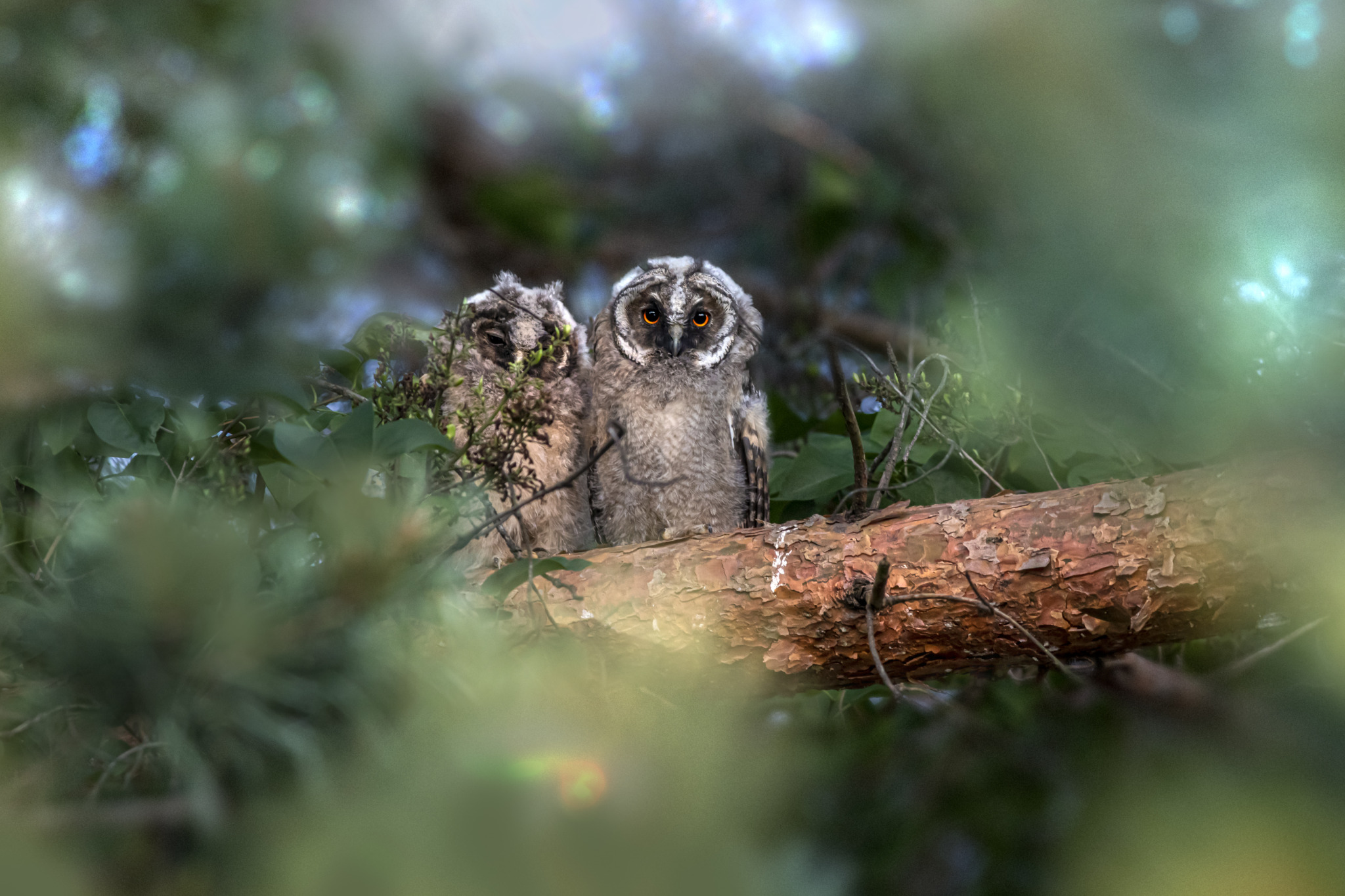Deep Overview: Long-Eared Owl (Asio otus)
The long-eared owl (Asio otus) is a medium-sized nocturnal owl known for its prominent ear tufts, cryptic plumage, and silent flight. It is widely distributed across Europe, Asia, North America, and parts of North Africa, favoring dense woodlands near open fields where it can hunt efficiently.
Taxonomy & Classification
- Kingdom: Animalia
- Phylum: Chordata
- Class: Aves
- Order: Strigiformes
- Family: Strigidae (True Owls)
- Genus: Asio
- Species: Asio otus
- Common Names:
- Long-eared owl
- Northern long-eared owl
Physical Description
- Size:
- Length: 31–40 cm (12–16 in)
- Wingspan: 86–100 cm (34–39 in)
- Weight: 200–435 g (7–15 oz)
- Coloration & Markings:
- Mottled brown, gray, and buff plumage, providing excellent camouflage in trees
- Dark streaks and spots on the chest and belly
- Bright orange to yellow eyes, surrounded by a black-and-white facial disk
- Long, prominent ear tufts (not actually ears), raised when alert
- Key Features:
- Rounded facial disk helps direct sound to its ears
- Slender body compared to other owls
- Silent flight due to specialized feather structure
Distribution & Habitat
- Geographic Range:
- Found in North America, Europe, Asia, and parts of North Africa
- Northern populations migrate south in winter
- Preferred Habitat:
- Mixed and coniferous forests, wooded grasslands, farmland edges, and riverine forests
- Roosts in dense trees, but hunts over open fields and meadows
Behavior & Adaptations
- Nocturnal & Secretive:
- Most active at dusk and dawn (crepuscular), but can hunt at night
- Roosts in dense foliage during the day, staying well-hidden
- Silent Flight:
- Special fringed wing feathers muffle sound, allowing it to approach prey unnoticed
- Defensive Posture:
- When threatened, it stretches its body vertically, mimicking a tree branch to avoid detection
- Migration & Seasonal Movements:
- Some populations stay year-round, while others migrate south in winter
Diet & Hunting Techniques
- Carnivorous (primarily small mammals):
- Rodents (mice, voles, rats, shrews) make up most of its diet
- Occasionally eats small birds, insects, amphibians
- Hunting Strategy:
- Hunts from perches or in low, slow flights over open fields
- Uses excellent night vision and highly sensitive hearing to locate prey in total darkness
- Swallows small prey whole and later regurgitates pellets containing bones and fur
Reproduction & Life Cycle
- Breeding Season:
- Typically March to July, depending on the region
- Nest Selection:
- Does not build its own nest—uses abandoned crow or magpie nests
- Sometimes nests in tree cavities or dense shrubs
- Eggs & Incubation:
- Clutch size: 3–10 eggs
- Incubation period: 26–28 days (female incubates while male hunts)
- Fledging & Maturity:
- Owlets leave the nest at 3–4 weeks old but rely on parents for food for several weeks
- Reach sexual maturity at 1 year
Predators & Threats
- Natural Predators:
- Larger owls (e.g., great horned owl, eagle owl)
- Hawks and eagles
- Foxes, raccoons, martens (prey on eggs and young)
- Human-Related Threats:
- Habitat destruction (deforestation, urbanization)
- Collisions with vehicles and power lines
- Pesticides reducing rodent populations (affecting food availability)
- Conservation Status:
- Listed as “Least Concern” (LC) by the IUCN, but populations declining in some areas due to habitat loss
Ecological Importance
- Natural Pest Control:
- Helps regulate rodent populations, benefiting farmers and ecosystems
- Prey for Larger Predators:
- Plays a role in the food chain, supporting raptors and carnivorous mammals
- Indicator Species:
- Population trends indicate the health of woodland and grassland ecosystems
Relationship with Humans
- Beneficial to Agriculture:
- Controls pest populations, reducing the need for rodenticides
- Rarely Seen Due to Secretive Nature:
- Despite its wide distribution, it is rarely spotted due to its camouflaged plumage and nocturnal habits
- Sometimes Mistaken for Other Owls:
- Similar to short-eared owls but prefers woodlands over open fields
Fun Facts
- Ear tufts are not ears! They are for communication and camouflage
- One of the most social owls—roosts in groups of up to 100 individuals in winter
- Can rotate its head up to 270 degrees, like other owls
- Makes a soft “hoo-hoo-hoo” call, but during breeding season, males can call up to 200 times per night
Conclusion
The Asio otus is a stealthy, nocturnal hunter that plays a crucial role in maintaining rodent populations in forests and farmlands. Its long ear tufts, silent flight, and cryptic plumage make it one of the most fascinating and elusive owls in the wild. Though it faces some threats from habitat loss, it remains widespread and adaptable.
Visited 894 times, 8 visit(s) today
Views: 1287
Subscribe to the newsletter:
